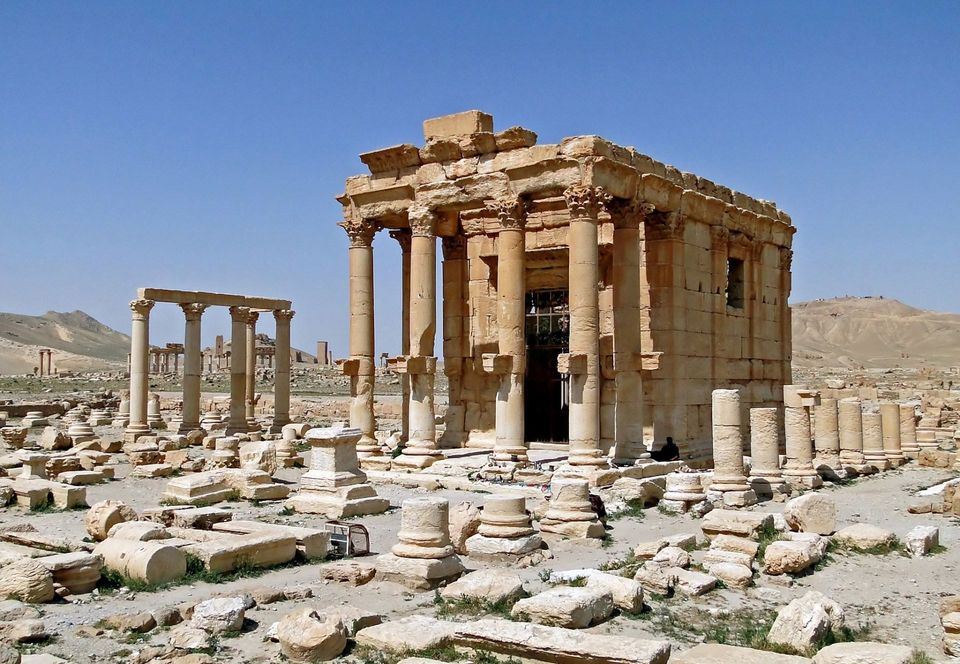Cultural Restitution
SHARE ARTICLE
The Pentagon has announced they are to follow the lead of the British Army by creating a new elite corps of volunteers, officially titled Cultural Heritage Preservation Officers.
Focussing on the Middle East, the new unit will comprise archaeologists, curators and conservation experts, tasked to protect heritage sites in war zones and to address the endemic problem of antiquities looting.
The British Army announced the creation of its own Cultural Property Protection Unit (‘CPPU’) in September 2018, also in response to the appalling desecration by Islamic State of important archaeological sites in Syria and Iraq. Both specialist units recall the work of the Monuments, Fine Arts and Archives programme - better known as ‘The Monuments Men’ - which involved a group of some 345 arts professionals operating between 1943 and 1951 to protect and recover Europe’s cultural heritage from Nazi violation and plundering.
The initiatives have been launched in response to the obligations placed on both country’s Armed Forces by the Hague Convention for the protection of cultural property from damage, destruction and looting. The United States joined the Hague Convention in 2009, several years before the United Kingdom, which didn’t ratify the Convention until 2017.
As a result of a failure by western states to install adequate protective measures, significant plundering and destruction of archaeological sites in the Middle East by Islamic State continued without western intervention for several decades. This led to the desecration of many valuable historic sites, including extensive architectural remains in the Roman city of Palmyra, Syria, the Nimrud palace in Iraq and mosques in Mosel, together with widespread plundering from important collections such as the National Museum in Baghdad, looted in 2003.
It wasn’t until 2015 that the United States began sourcing cultural specialists to create this special unit, which involves a partnership between the U.S. Army and the Smithsonian Institution. The Smithsonian are responsible for training the Cultural Heritage Preservation Officers.
Since then, “it’s been a gradual recruiting effort,” according to Smithsonian Cultural Rescue Initiative director Cori Wegener, speaking to Artnet.com . Wegener served as a Civil Affairs Arts, Monuments and Archives officer in Iraq and holds workshops training military personnel in cultural protection.
The British Cultural Property Protection Unit, which was in gestation since 2014, operates on similar lines though on a smaller annual budget of just £300,000. Led by former Gulf War commander Lt. Colonel Timothy Purbrick, the CPPU comprises reservists from all three services with specialist skills in conservation, art-theft avoidance and excavation.
Both U.S. and British units will assist the armed forces with tactical planning to ensure important cultural sites are protected from air strikes or land combat. They will also advise on border security, helping to ensure that vehicles at sensitive borders are checked for stolen artefacts.
“Where we are responsible for an area of operations,” explained Lt Colonel Purbrick in October 2018, “it’s our duty and our obligation under international humanitarian law to ensure that we respect and protect that cultural property”.
In addition to these objectives, both units recognise they must do more to help restrict the flow of money to terrorist organisations. As a result, both intend to work closely with Interpol, NATO, other military cultural heritage units in Italy, Austria and the Netherlands, together with the intergovernmental organisation ICCROM (The International Centre for the Study of the Preservation and Restoration of Cultural Property).
After this was written........
In February 2020, Russia's Culture Ministry announced the creation of their own special unit to locate works that disappeared during the "Great Patriotic War" (World War Two). This initiative comes after Poland has stepped up restitution claims against the country. Items to which Poland lays claim are considered Russia's property and are unlikely to be returned.
Photo: Return of Lady with an Ermine, April 1946
Courtesy of Wikimedia Commons
More News




